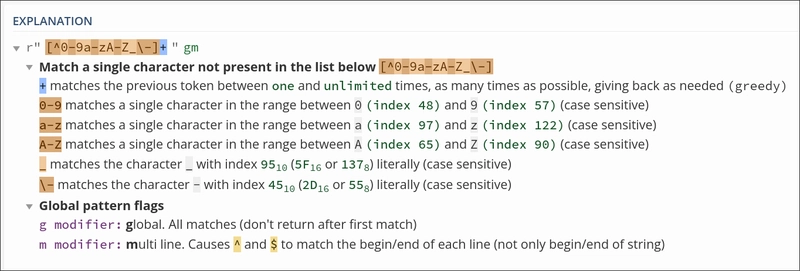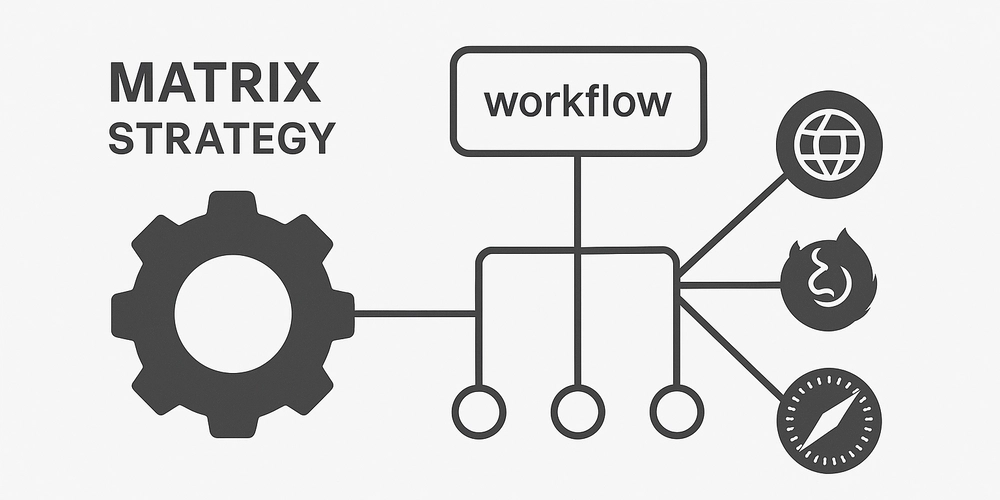6 Common Misconceptions About Node.js Event Loop
Node.js is famous for its non-blocking I/O and event-driven architecture, but the event loop remains one of its most misunderstood aspects. Even experienced developers sometimes get confused about how it works, leading to misconceptions that can affect how they write and optimize their applications. If you've ever heard claims like "Node.js is single-threaded, so it can’t handle concurrent tasks" or "setTimeout delays execution in the event loop," you're not alone. 1. Misconception: Node.js is single-threaded, so it can’t handle concurrent operations The Reality: Node.js has a single-threaded JavaScript runtime, but it is not single-threaded when handling asynchronous tasks. When people hear that Node.js is single-threaded, they often assume that it can't handle multiple operations at once, which isn't true. The event loop and libuv, the library that powers asynchronous I/O in Node.js, allow it to perform non-blocking tasks using background threads from a worker pool. For example, when you make an I/O request, such as reading a file or querying a database, Node.js delegates the task to a separate thread in the background. Once completed, the callback is pushed to the event loop for execution. What You Should Know: Node.js uses multiple threads under the hood for I/O operations, file system tasks, and even CPU-intensive tasks with the Worker Threads API. The single-threaded nature only applies to the execution of JavaScript code in the main thread. The event loop efficiently manages multiple asynchronous operations, making Node.js excellent for handling concurrent connections. Example: const fs = require('fs'); console.log("Start reading file..."); fs.readFile("example.txt", "utf8", (err, data) => { if (err) throw err; console.log("File content:", data); }); console.log("Other tasks can run while file is being read!"); Even though the readFile operation is asynchronous, Node.js doesn’t block the execution of other tasks while waiting for the file to be read. 2. Misconception: setTimeout ensures execution after the specified delay The Reality: setTimeout does not guarantee execution exactly after the given delay; instead, it schedules a callback after at least the specified time. What You Should Know: setTimeout places the callback in the Timers queue but does not execute it until the event loop is available. If the call stack is busy, execution may be delayed beyond the specified timeout. The actual delay depends on how many tasks are ahead of it in the event loop. Example: console.log("Start"); setTimeout(() => { console.log("Executed after 2 seconds"); }, 2000); const start = Date.now(); while (Date.now() - start console.log("setTimeout callback"), 0); Promise.resolve().then(() => console.log("Promise callback")); console.log("End"); Expected output: Start End Promise callback setTimeout callback Even though setTimeout is scheduled with 0ms delay, the Promise callback executes first because microtasks (Promises) run before the next event loop iteration. 4. Misconception: process.nextTick and setImmediate are the same The Reality: process.nextTick() and setImmediate() are different in how they schedule callbacks: process.nextTick() schedules a callback to run immediately after the current operation but before any I/O tasks or timers. setImmediate() schedules a callback after I/O tasks but before timers. What You Should Know: Using process.nextTick() too much can starve the event loop by continuously executing microtasks, preventing I/O operations from running. setImmediate() is usually a better choice when you want to execute a callback after I/O but before the next event loop iteration. Example: const fs = require('fs'); fs.readFile(__filename, () => { setImmediate(() => console.log("setImmediate callback")); process.nextTick(() => console.log("process.nextTick callback")); }); console.log("Start"); Expected output: Start process.nextTick callback setImmediate callback Even though setImmediate() is scheduled first, process.nextTick() runs first because it executes before I/O tasks in the event loop. 5. Misconception: The event loop runs only when there’s a pending task The Reality: The event loop never stops running as long as the process is active. It continuously checks for pending timers, I/O events, and scheduled callbacks. What You Should Know: The event loop does not pause when there are no tasks—it keeps polling for new work. If there are no tasks left, the Node.js process exits automatically. Keeping an open event listener, setInterval(), or an unresolved Promise can keep the event loop running indefinitely. 6. Misconception: Heavy CPU tasks work well in

Node.js is famous for its non-blocking I/O and event-driven architecture, but the event loop remains one of its most misunderstood aspects. Even experienced developers sometimes get confused about how it works, leading to misconceptions that can affect how they write and optimize their applications.
If you've ever heard claims like "Node.js is single-threaded, so it can’t handle concurrent tasks" or "setTimeout delays execution in the event loop," you're not alone.
1. Misconception: Node.js is single-threaded, so it can’t handle concurrent operations
The Reality:
Node.js has a single-threaded JavaScript runtime, but it is not single-threaded when handling asynchronous tasks.
When people hear that Node.js is single-threaded, they often assume that it can't handle multiple operations at once, which isn't true. The event loop and libuv, the library that powers asynchronous I/O in Node.js, allow it to perform non-blocking tasks using background threads from a worker pool.
For example, when you make an I/O request, such as reading a file or querying a database, Node.js delegates the task to a separate thread in the background. Once completed, the callback is pushed to the event loop for execution.
What You Should Know:
- Node.js uses multiple threads under the hood for I/O operations, file system tasks, and even CPU-intensive tasks with the Worker Threads API.
- The single-threaded nature only applies to the execution of JavaScript code in the main thread.
- The event loop efficiently manages multiple asynchronous operations, making Node.js excellent for handling concurrent connections.
Example:
const fs = require('fs');
console.log("Start reading file...");
fs.readFile("example.txt", "utf8", (err, data) => {
if (err) throw err;
console.log("File content:", data);
});
console.log("Other tasks can run while file is being read!");
Even though the readFile operation is asynchronous, Node.js doesn’t block the execution of other tasks while waiting for the file to be read.
2. Misconception: setTimeout ensures execution after the specified delay
The Reality:
setTimeout does not guarantee execution exactly after the given delay; instead, it schedules a callback after at least the specified time.
What You Should Know:
-
setTimeoutplaces the callback in the Timers queue but does not execute it until the event loop is available. - If the call stack is busy, execution may be delayed beyond the specified timeout.
- The actual delay depends on how many tasks are ahead of it in the event loop.
Example:
console.log("Start");
setTimeout(() => {
console.log("Executed after 2 seconds");
}, 2000);
const start = Date.now();
while (Date.now() - start < 3000) {
// Blocking the event loop for 3 seconds
}
console.log("End");
Expected output:
Start
End
Executed after 2 seconds (actually after ~3s due to blocking)
Since the event loop is blocked for 3 seconds, the setTimeout callback gets delayed, proving that setTimeout(2000) does not guarantee execution after exactly 2 seconds.
3. Misconception: Promises and async/await skip the event loop
The Reality:
Promises and async/await do not bypass the event loop. Instead, they schedule callbacks in the microtask queue, which has a higher priority than the regular callback queue.
What You Should Know:
- Microtasks (like
process.nextTick()andPromise.then()) run before I/O callbacks, timers, and other scheduled tasks. -
async/awaitis just syntactic sugar over Promises and does not make asynchronous operations synchronous. - Even though
awaitmakes code look blocking, it still yields control to the event loop, allowing other operations to run.
Example:
console.log("Start");
setTimeout(() => console.log("setTimeout callback"), 0);
Promise.resolve().then(() => console.log("Promise callback"));
console.log("End");
Expected output:
Start
End
Promise callback
setTimeout callback
Even though setTimeout is scheduled with 0ms delay, the Promise callback executes first because microtasks (Promises) run before the next event loop iteration.
4. Misconception: process.nextTick and setImmediate are the same
The Reality:
process.nextTick() and setImmediate() are different in how they schedule callbacks:
-
process.nextTick()schedules a callback to run immediately after the current operation but before any I/O tasks or timers. -
setImmediate()schedules a callback after I/O tasks but before timers.
What You Should Know:
- Using
process.nextTick()too much can starve the event loop by continuously executing microtasks, preventing I/O operations from running. -
setImmediate()is usually a better choice when you want to execute a callback after I/O but before the next event loop iteration.
Example:
const fs = require('fs');
fs.readFile(__filename, () => {
setImmediate(() => console.log("setImmediate callback"));
process.nextTick(() => console.log("process.nextTick callback"));
});
console.log("Start");
Expected output:
Start
process.nextTick callback
setImmediate callback
Even though setImmediate() is scheduled first, process.nextTick() runs first because it executes before I/O tasks in the event loop.
5. Misconception: The event loop runs only when there’s a pending task
The Reality:
The event loop never stops running as long as the process is active. It continuously checks for pending timers, I/O events, and scheduled callbacks.
What You Should Know:
- The event loop does not pause when there are no tasks—it keeps polling for new work.
- If there are no tasks left, the Node.js process exits automatically.
- Keeping an open event listener,
setInterval(), or an unresolved Promise can keep the event loop running indefinitely.
6. Misconception: Heavy CPU tasks work well in the Node.js event loop
The Reality:
Node.js is not ideal for CPU-intensive tasks because a single long-running operation blocks the event loop, preventing other tasks from executing.
What You Should Know:
- For CPU-heavy operations, use Worker Threads to run tasks in parallel.
- Avoid blocking the event loop with large calculations—offload them to child processes or an external service.
Example of Blocking the Event Loop:
console.log("Start");
setTimeout(() => console.log("Timeout executed"), 0);
for (let i = 0; i < 1e9; i++) {} // Simulating heavy computation
console.log("End");
Here, the event loop gets blocked, delaying the setTimeout callback execution.
Solution: Offloading CPU Work
const { Worker } = require('worker_threads');
const worker = new Worker('./heavyTask.js');
worker.on('message', message => console.log(message));
By using Worker Threads, you avoid blocking the main thread, keeping the event loop responsive.
Final Thoughts
Understanding the Node.js event loop is crucial for writing efficient and scalable applications.
You may also like:
Read more blogs from Here
Share your experiences in the comments, and let’s discuss how to tackle them!
Follow me on Linkedin







































































